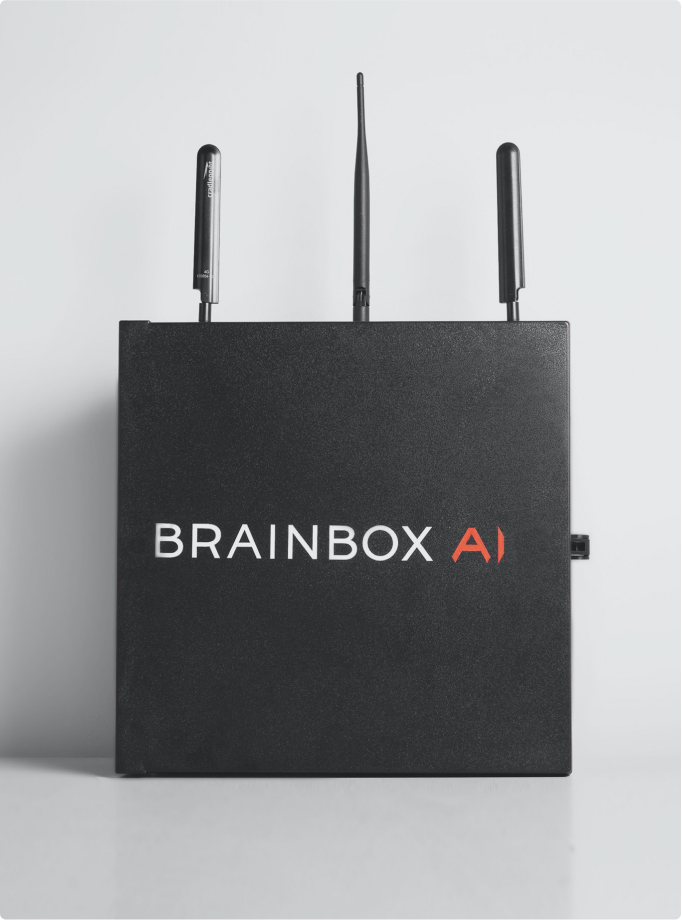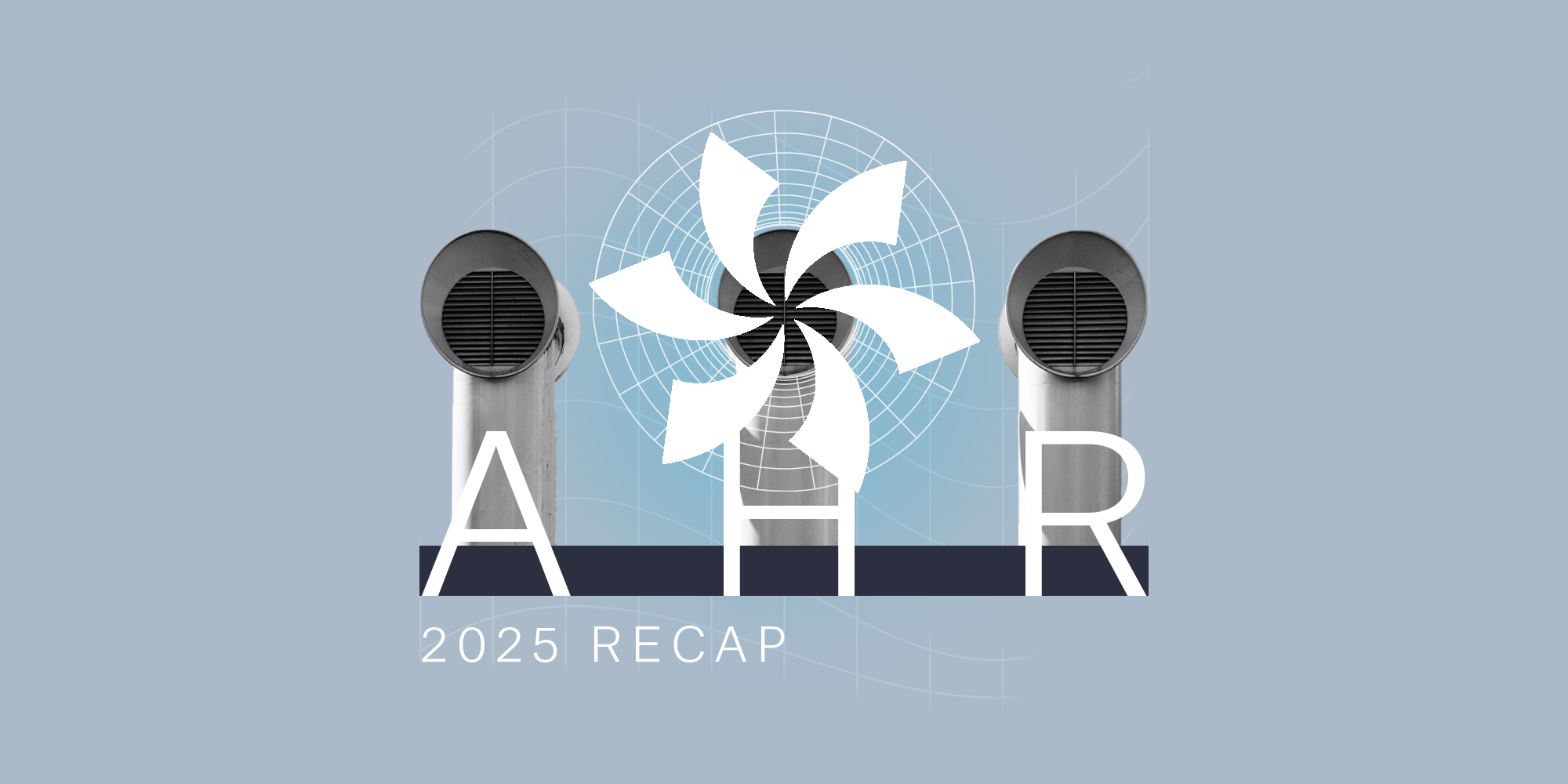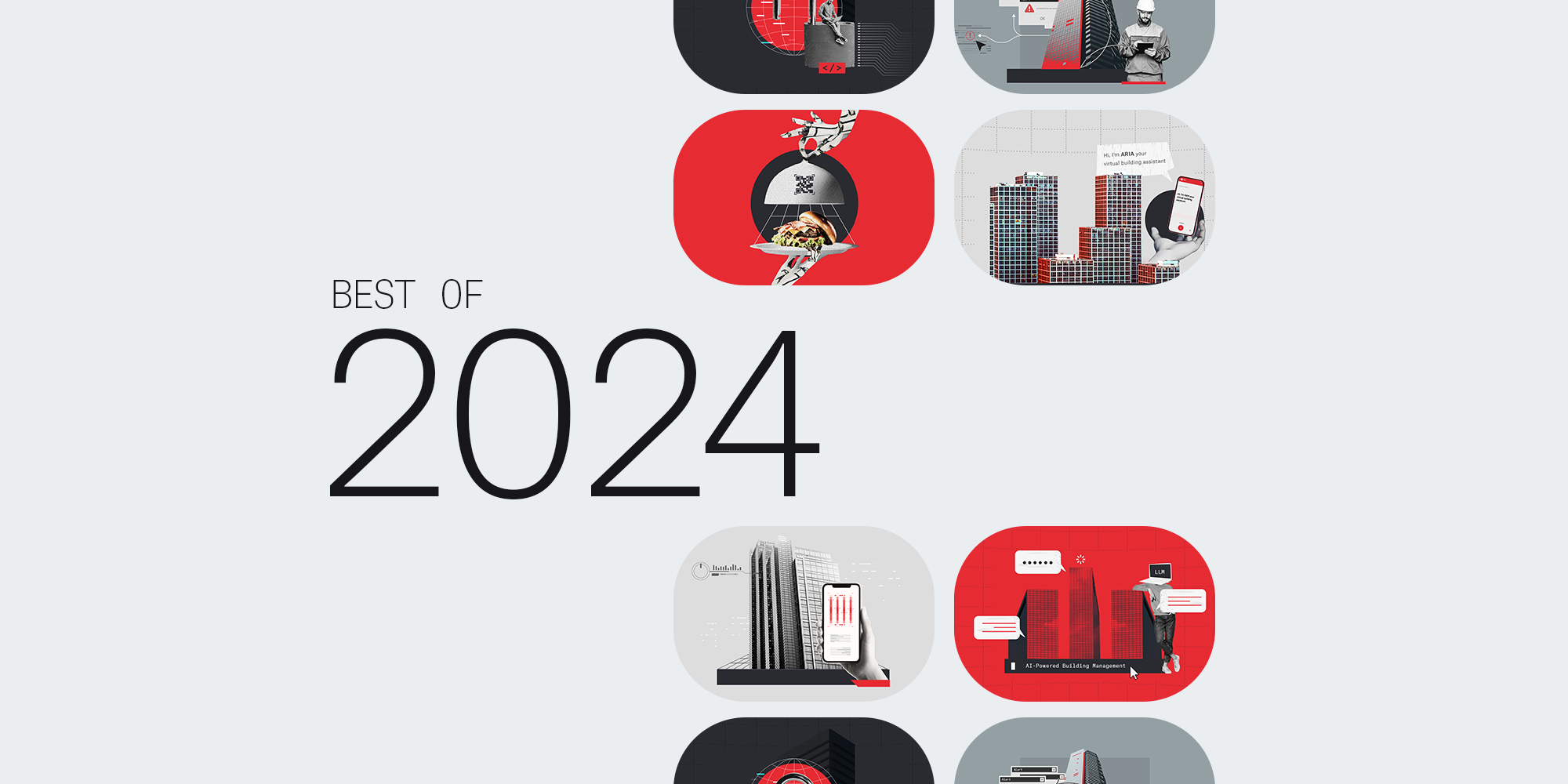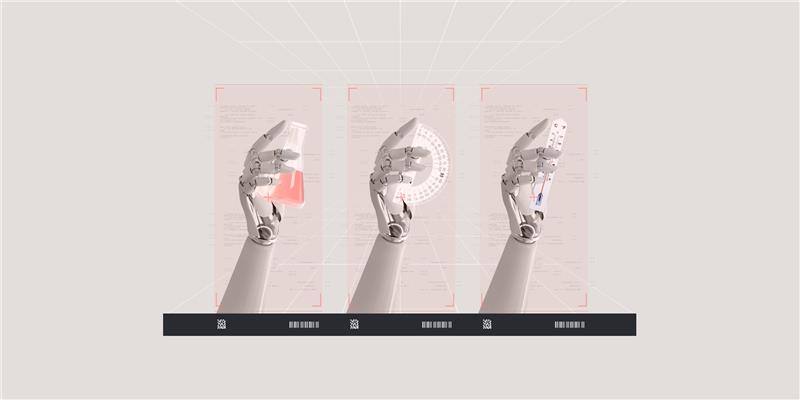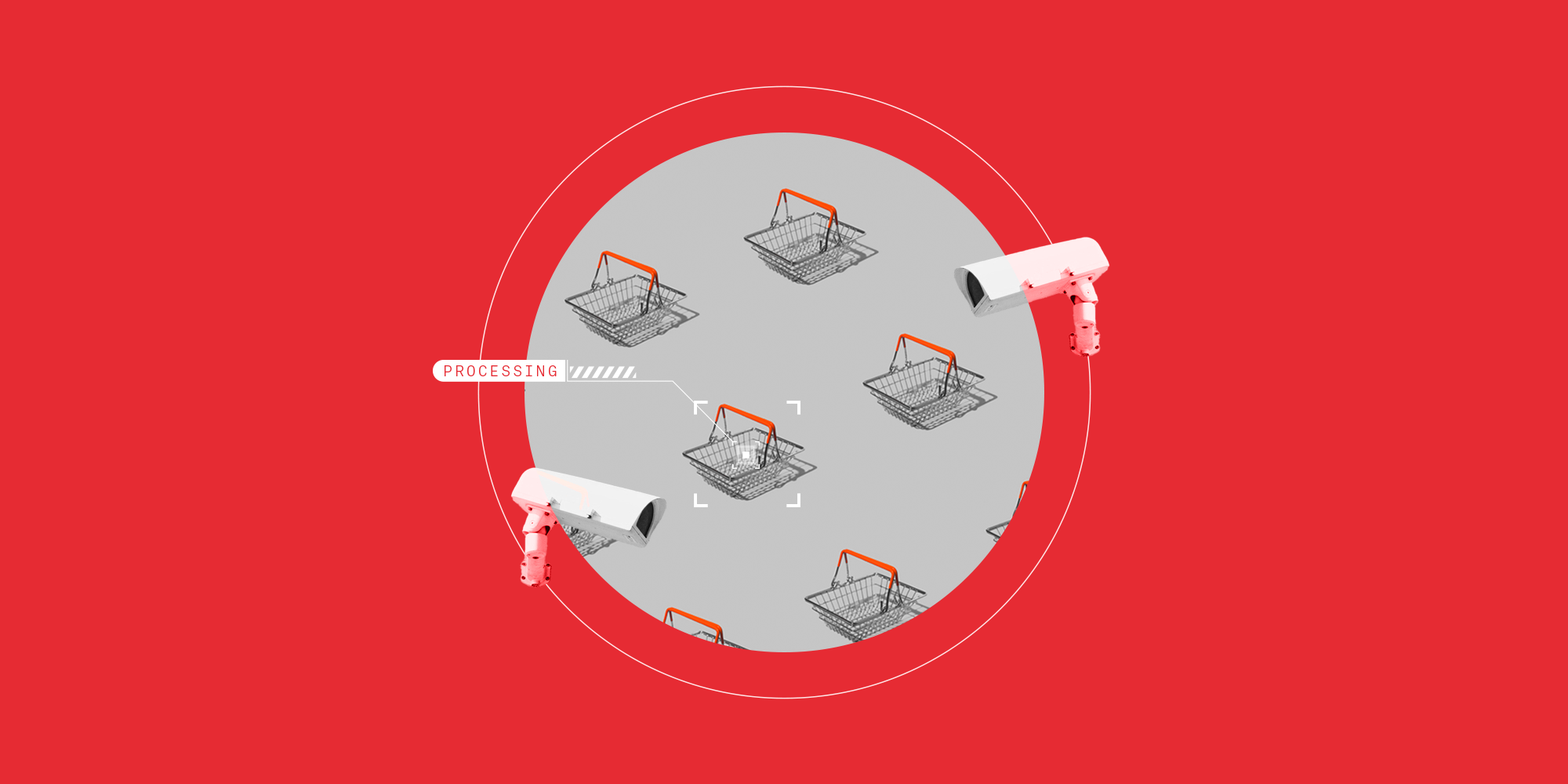Carbon intensity: The ultimate emissions KPI for buildings

Author
Omar Tabba
Chief Product Officer, BrainBox AI
Building emissions are coming into sharp relief. As headlines of devastating floods, wildfires, and other climate change-related events dominate the global news cycle, real estate owners and operators are taking an ever-critical role in reducing emissions and decarbonizing our economy – and this role is highly time-sensitive.
According to the UN IPCC, to keep global warming to no more than 1.5°C, emissions need to be reduced by 45% by 2030. And they’ll need to reach net zero by 2050. Clearly, the speed at which we need to lower our carbon footprint calls for a sharp reduction in the world’s largest emitting industries, including buildings.
In fact, buildings are so emissions intensive that their operations alone are responsible for roughly 27% of annual global emissions. Additionally, over the next 40 years, the world is expected to build 230 billion square meters in new construction – adding the equivalent of Paris to the planet every single week. It's no wonder, then, that buildings are being viewed as both a critical challenge and a tremendous opportunity for change.
So, what to do? There are 5.9 million commercial buildings in the US alone. Where do we even begin? Well, for starters, we’ll need to identify and prioritize the worst-performing buildings, retrofitting them with lower-emitting materials and equipment and optimizing their operations to make them more energy-efficient. The key to identifying these laggard buildings is figuring out just how much carbon each building emits.
Enter: Carbon Intensity (CI). Taken as the ratio of carbon dioxide equivalent (CO2e) emissions to building floor area, this metric can tell us just how emissions-heavy a building is, sparking long-term emissions reductions and profitability. Moreover, when used in conjunction with the right technology, it could hold the key to sustainable real estate, setting the stage for a greener and more resilient future.
Carbon intensity ≠ energy use intensity
You might already be tracking your building’s energy use intensity (EUI) and reporting it to regulatory agencies such as the Department of Energy – and that’s a great start - but here’s the catch: how much energy your building uses isn’t necessarily reflective of the amount of greenhouse gases (GHGs) it emits. In other words, how much energy you consume doesn’t equal how much carbon you emit. So, if you want to find out what your building’s environmental impact really is, you should be looking at its CI.
But what exactly is a building’s CI and how does it differ from its EUI? Well, firstly, EUI refers to the amount of energy (in kWh or kBTU) used per square foot per year, whereas the CI of a building provides a more comprehensive view of its environmental impact, measuring the annual amount of carbon dioxide equivalent (CO2e) emitted per square foot of real estate. Secondly, EUI focuses mainly on consumption without considering the carbon emissions associated with that energy. CI is all about the emissions.
In short, where EUI tells you how much energy your building uses, CI measures how much carbon it emits. This means that CI actually ends up giving you a better estimate of your building’s true carbon footprint, offering a more accurate picture of its contribution to climate change.
For example, a building in the province of Alberta might have a lower EUI than a building of the same size and type in the province of Quebec, but because 89% of electricity in Alberta is produced from fossil fuels (as opposed to Quebec, which relies on hydroelectricity to generate 94% of its electricity), its CI is likely far higher.
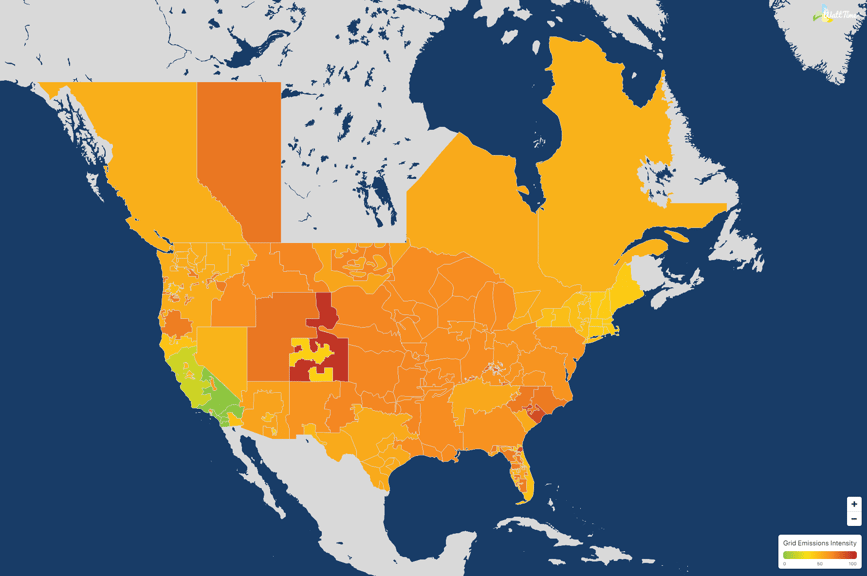
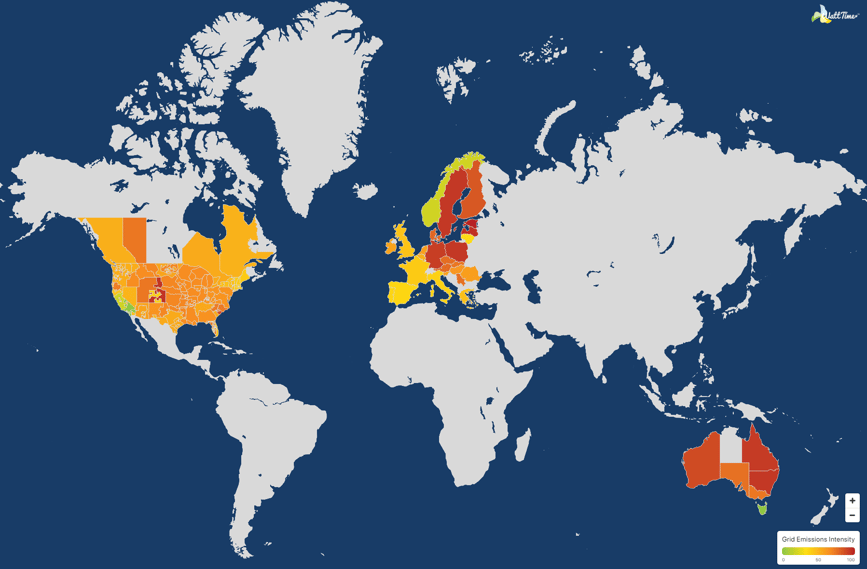
Image description: A building’s carbon intensity is heavily dependent on its grid’s intensity, which is determined by the kind of fuel used to power it. This varies by geographical location, as demonstrated by Wattime’s real-time grid intensity map.
Making carbon intensity a mandatory metric
You might ask why building owners and managers should care whether their buildings’ CI is high. Well, aside from a social responsibility (and moral obligation) to help curb the climate crisis, lowering your building’s CI actually comes with a host of benefits, the biggest of which right now is meeting regulatory requirements. Policymakers and regulators, such as those backing California’s new landmark climate disclosure bill and New York City’s Local Law 97, are zeroing in on the fact that CI is a more accurate indicator of a building’s environmental impact than EUI, meaning that it’s only a matter of time before CI becomes a mandatory metric that building owners and managers have to measure and report on.
In fact, several countries and prominent initiatives are already on board. The UK government, for instance, has introduced Streamlined Energy and Carbon Reporting (SECR) regulations, which require large companies to report their energy consumption and associated greenhouse gas emissions. Also encouraging companies to report their carbon intensity are the United Nations Global Compact (UNGC) and green building certifications like LEED and BREEAM, for which measuring, tracking, and reducing carbon intensity is often a crucial component of achieving higher ratings.
Measuring your building’s CI with AI
However, measuring and tracking a building’s CI is a complex undertaking that demands an extensive amount of comprehensive data, including emissions sources, energy consumption, and emissions factors - each of which has distinct variables to consider. Making it even more challenging is the multifaceted nature of a building's energy sources, both consumed and produced. On one hand, emissions tied to energy drawn from the electrical grid vary depending on a region’s energy mix, which could include fossil fuels, renewables, or a combination of both. This variable grid cleanliness introduces an element of uncertainty that makes accurate calculation a real feat.
The antidote to this complexity lies, of course, in automation. An automated system can seamlessly gather and process real-time data from a building management system, energy meters, utility bills, and grid emission factors. It also performs swift calculations and dynamic adjustments based on evolving energy consumption patterns and grid characteristics - and it does all this pretty much instantaneously.
In fact, being able to take real-time data into account is one of the most fundamental benefits that automation brings to the table. This is because a building’s CI score fluctuates with grid, building, and operational changes. So, what works to lower the CI of your building may not work for the building next door. And what works for your building one year, might not be as effective the following year. Automation stays on top of this, pinpointing exactly what you need to reduce your building’s carbon intensity when you need it.
In this way, automation can empower building owners, managers, and policymakers with instant insights into a building's carbon footprint, leading to more informed decision-making for emission reduction strategies and energy efficiency improvements. It also enables building managers to track carbon intensity reduction progress in real-time, facilitating prompt adjustments to mitigate emissions as needed and helping organizations meet reporting obligations by providing accurate data for compliance and transparency.
Lowering buildings’ CI to save the planet
When you think about it, deciding to measure, track, and reduce your building’s CI makes sense on so many levels. On an individual or organizational level, it improves a building’s performance and reduces its carbon footprint, resulting in regulatory compliance, cost savings, improved sustainability, and long-term profitability. At the investor, owner, or building manager level, it’s about making more informed decisions and prioritizing sustainability. At the real estate industry level, it represents a profound shift toward a more sustainable, resilient, and competitive real estate industry. And, of course, on a planetary level, it helps mitigate the effects of climate change.
Clearly, measuring CI is more than a means to assess a building’s environmental impact; it’s a catalyst for transformation toward sustainable building practices. It’s also a salient step toward curbing carbon emissions and fulfilling our collective responsibility to safeguard the planet for future generations.
- By Omar Tabba, Chief Product Officer, BrainBox AI
Curious to see how we measure your building’s CI?

